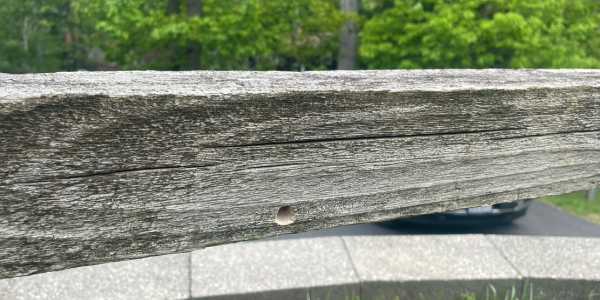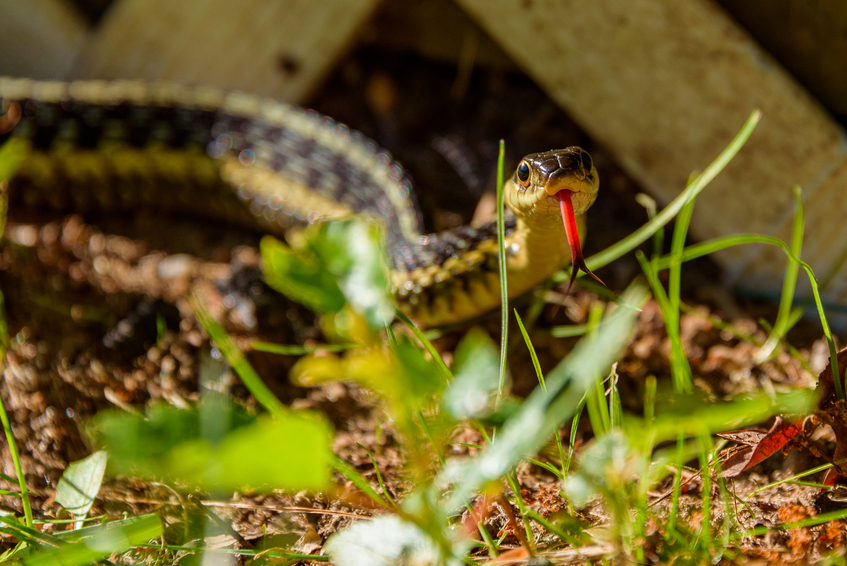
Why Carpenter Bees Are More Than Just a Nuisance Pest
If you live on Long Island, spring brings more than blooming flowers and backyard barbecues—it also brings buzzing carpenter bees looking for the perfect place to drill. At first glance, these bees might seem harmless. They’re not aggressive, and they don’t live in hives like other bees. But don’t let their laid-back behavior fool you. Carpenter bees are wood-destroying pests that can cause serious damage to your home over time.
Let’s take a closer look at why carpenter bees are more than just a nuisance, and what you can do to protect your property.
What Are Carpenter Bees?
Carpenter bees are large, solitary bees that look similar to bumblebees. The main difference? While bumblebees are fuzzy all over, carpenter bees have shiny black abdomens. They don’t build hives, but instead tunnel into untreated or unpainted wood to create nesting galleries.
On Long Island, we typically start to see carpenter bee activity in April and May as the temperatures rise and the insects come out of winter dormancy. Mating season peaks in spring, and that’s when they typically start drilling into your home’s wood surfaces to lay their eggs.
Why Carpenter Bees Are a Problem
Many homeowners dismiss carpenter bees because they don’t form massive colonies or swarm aggressively like wasps. However, their presence can lead to bigger issues, including:
1. Structural Damage Over Time
Carpenter bees drill round, half-inch holes into wood to create tunnels for laying eggs. Over time, these tunnels can extend several inches—or even feet—into beams, siding, railings, fascia boards, or decks. If carpenter bees return year after year (and they often do), that damage adds up. Repeated nesting weakens structural wood and invites rot and decay.
2. Unsightly Stains and Noise
Even if the damage isn’t yet structural, carpenter bees leave behind yellow staining from excrement, along with telltale piles of sawdust under their tunnels. Some homeowners also hear faint scratching or buzzing from inside the wood—a clear sign there’s activity beneath the surface.
3. Woodpecker Problems
Carpenter bees can attract other pests, especially woodpeckers. These birds love to feast on carpenter bee larvae and will hammer away at your home to reach them, creating even more damage.
Common Places Carpenter Bees Target
On Long Island, many homes feature cedar siding, wooden soffits, eaves, and decks—all prime real estate for carpenter bees. They prefer untreated or weathered softwoods, especially in sunny areas.
Some of the most common spots we find infestations include:
- Roof eaves and overhangs
- Wooden porches and railings
- Deck joists and fascia boards
- Wooden playsets and sheds
- Fence posts and outdoor furniture
How to Tell If You Have Carpenter Bees
Think you might have carpenter bees? Here are some signs to watch for:
- Perfectly round holes (about the size of a pinky) in wood
- Small piles of sawdust beneath holes
- Yellowish-brown stains near entry points
- Buzzing bees hovering around wood surfaces
- Increased woodpecker activity
While these signs are easy to spot, it can be tricky to assess the full extent of the damage without a professional inspection.
How Knockout Pest Control Knocks Out Carpenter Bees
At Knockout Pest Control, we’ve been protecting Long Island homes from wood-destroying pests like carpenter bees for over 50 years. We know these bees can be stubborn and persistent—but so are we.
Here’s how we help:
1. Thorough Inspection
Our technicians start by identifying every point of entry, locating active galleries, and assessing the level of damage. We also look for signs of recurring infestations.
2. Safe, Targeted Treatments
We apply eco-friendly, targeted treatments inside the galleries to eliminate active bees without harming the surrounding environment. Our focus is always on effective control with minimal impact.
3. Preventive Solutions
After knocking out the infestation, we’ll seal up old galleries to prevent reinfestation and offer long-term prevention strategies. Our team can also advise on which areas to paint or treat with wood sealant to make your home less attractive to future carpenter bees.
4. Experience That Matters
We’ve been using green pest control practices for years and hold multiple industry certifications, including QualityPro Green. That means you can trust us to get the job done right—and responsibly.
Protect Your Long Island Home Now
If you’ve spotted carpenter bees this spring, don’t brush them off. The longer they’re allowed to tunnel into your home’s woodwork, the more extensive—and expensive—the damage becomes.
New customers can save $50 on their first carpenter bee service when they schedule now.
Call Knockout Pest Control at (800) 244-PEST or request a free inspection online.


